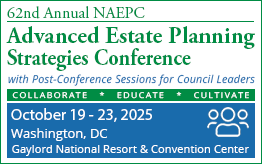June, 2010 Newsletter
Provided by Leimberg Information Services
See other issues.
Ludwick v. Commissioner: Valuation & Fractional Interests in Real Estate
”Since the taxpayers were arguing for a discount at the top of the range presented by the cases, it was incumbent upon them to put forth a strong case. They just apparently did not do that. In fact, from the Tax Court’s opinion, they didn’t do very much at all in their report and testimony.
That the taxpayers’ expert didn’t even include the underlying comparables to which the property was compared seems to me to have been an enormous oversight, especially when considering that the Tax Court was the forum in the case. Why not provide that data since their appraiser relied upon it?”
Is the Tax Court getting tougher on fractional interest discounts? Paul Hood provides members with his analysis of a recent Tax Court memorandum decision which raises that very question.
Paul Hood is Past Chair of the Tax Section of the Louisiana State Bar Association. Paul is a frequent speaker and his articles have appeared in a number of publications, including BNA Tax Management Memorandum, CCH Journal of Practical Estate Planning, Digest of Federal Tax Articles, Loyola Law Review, Louisiana Bar Journal, Tax Ideas and Charitable Gift Planning News.
Here is Paul's commentary:
EXECUTIVE SUMMARY:
In a memorandum decision, Judge Halpern of the Tax Court decided that the proper discount for a gift of a fractional interest in real estate was 17%; the taxpayer had claimed 30% and at trial the IRS asserted that the proper discount was 11%. This conclusion considered the projected costs of partition and discount for time to market, and the court assessed that there would be a 10% chance of partition.
FACTS:
Andrew and Worth, husband and wife, each owned 50% interest in a piece of Hawaii real estate as tenants in common. In 2004, they each transferred their respective interests in the real estate to their own separate qualified personal residence trust. The valuation numbers for the case are as follows:
· Value per gift tax return: $2,537,500
· Fractional interest discount-gift tax return: 30%
· Estimated buyer’s expected rate of return: 30%
· IRS determination of value-notice of deficiency: $3,081,250
· IRS fractional interest discount-notice of deficiency: 15%
· IRS fractional interest discount-trial: 11%
· IRS estimated buyer’s expected rate of return 10%
· Tax Court determination of proper value: $3,089,000
· Tax Court determination of fractional interest discount: 17%
· Tax Court determination of likelihood of partition: 10%
· Tax Court determination of estimated buyer’s expected rate of return: 10%
· Tax Court determination of estimated time to partition and sell: Two years
· Tax Court determination of estimated costs of partition: 1% of the fair market value
The taxpayers’ appraiser arrived at his conclusion of a 30% discount by analyzing a data base of 69 sales of undivided interests in real estate that had occurred between 1961 and 2006, as well as sales of partnership interests. The IRS appraiser relied in part on four sales of fractional interests in commercial real estate in the eastern United States that had occurred between 2002 and 2007 as well as on surveys of California real estate brokers, a review of tender offers for majority interests in public companies and lawyers’ estimates of the costs of partition.
The Tax Court did not think too much of either expert’s work. In particular, the Tax Court did not think that each expert’s reliance upon their respective fractional interest sales was proper. With respect to the taxpayer’s expert, the Tax Court wrote:
He provided no way for us to evaluate his analysis, however. He failed not only to explain how the discounts were calculated (i.e., how did he calculate the underlying fair market value?) but also to provide any measure of the variability or dispersion of his data points (e.g., their standard deviations). Most importantly, he did not provide any of the data; we do not know the specifics of any of the “undivided interest transactions”. We have no easy to know how comparable those properties were to the one in issue.
The Tax Court noted that the IRS expert’s reliance upon sales of commercial property were not at all comparable to the vacation home at issue and dismissed this evidence. The Tax Court similarly dismissed the other arguments and evidence offered by both experts.
With respect to costs of partition as a possible measure of a fractional interest discount, the Tax Court observed:
a buyer who had a right to partition could not demand a discount greater than (1) the discount reflecting the cost and likelihood of partition and (2) the discount representing the marketability risk because, if he did, another (rational) buyer would be willing to bid more.
Therefore, the Tax Court reasoned that it had to determine the length of the partition process, the costs of partition, the costs of selling the property and the likelihood of partition, as well as the buyer’s expected rate of return and the proportional value of an undivided 50% interest in the real estate, citing its opinion in Barge Est. v. Comr. back in 1997 (like this opinion, also a Judge Halpern memorandum opinion).
As was summarized above, the Tax Court determined that (a) there would be a 10% likelihood of partition, (b) the length of time that it would take to partition and sell the property was two years, (c) the estimated costs to partition the property would be 1% of the fair market value of the real estate and (d) the buyer’s expected rate of return would be 10%. As a result, the Tax Court determined that the proper fractional interest discount was 17%
COMMENTS:
Many Tax Court decisions have determined the proper discount for a fractional interest in real estate. Since 1990, the following cases have come out of the Tax Court: Amlie Est. v. Comr. (2006 estate tax case-15%), Forbes Est. v. Comr. (2001 estate tax case-30%), Shepherd v. Comr. (2000 gift tax case-15%), Reichardt Est. v. Comr. (2000 estate tax case-10%), Stevens Est. v. Comr. (2000 estate tax case 25%), Bush Est. v. Comr. (2000 estate tax case-10%), Brocato Est. v. Comr. (1999 estate tax case), Fratini Est. v. Comr. (1998 estate tax case-0), Barge Est. v. Comr. (1997 estate tax case-28%), Cervin Est. v. Comr. (1994 estate tax case-20%), LeFrak v. Comr. (1993 gift tax case-20%), Pilsbury Est. v. Comr. (1992 estate tax case-15%) and Zabel v. Comr. (1990 gift tax case-10%).
Since the taxpayers were arguing for a discount at the top of the range presented by the cases, it was incumbent upon them to put forth a strong case. They just apparently did not do that. In fact, from the Tax Court’s opinion, they didn’t do very much at all in their report and testimony.
That the taxpayers’ expert didn’t even include the underlying comparables to which the property was compared seems to me to have been an enormous oversight, especially when considering that the Tax Court was the forum in the case. Why not provide that data since their appraiser relied upon it?
In the Tax Court, an appraiser’s valuation report is the appraiser’s direct testimony. Therefore, it is incumbent upon an appraiser to include everything that the appraiser relied upon in reaching his or her conclusion of value. Query whether the taxpayers’ expert appraisal report as the Tax Court presents it even complied with the pertinent appraisal standards? It is important to note that there are two sides to every story, and we didn’t hear very much from the taxpayers’ appraiser in the memorandum decision.
Judge Halpern appears to be pretty dogmatic with respect to his analysis of the proper factors to consider when estimating a fractional interest discount. Nevertheless, a good real estate appraisal report should expressly consider those factors, which could become as famous as the Mandelbaum factors for determining the proper discount for lack of marketability.
HOPE THIS HELPS YOU HELP OTHERS MAKE A POSITIVE DIFFERENCE!
Paul Hood
CITE AS:
LISI Estate Planning Newsletter #1642 (May 18, 2010) at http://www.leimbergservices.com Copyright 2010 Leimberg Information Services, Inc. (LISI). Reproduction in Any Form or Forwarding to Any Person Prohibited – Without Express Permission.
CITES:
Ludwick v. Comr., T.C. Memo 2010-104; Amlie Est. v. Comr., T.C. Memo 2006-76; Forbes Est. v. Comr., T.C. Memo 2001-72; Shepherd v. Comr., 115 T.C. 376 (2000); Reichardt Est. v. Comr., 114 T.C. 144 (2000); Stevens Est. v. Comr., T.C. Memo 2000-53; Brocato Est. v. Comr., T.C. Memo 1999-424; Fratini Est. v. Comr., T.C. Memo 1998-308; Barge Est. v. Comr., T.C. Memo 1997-188; Cervin Est. v. Comr., T.C. Memo 1994-550; LeFrak v. Comr., T.C.Memo 1993-526; Pilsbury Est. v. Comr., T.C. Memo 1992-425; and Zabel v. Comr., T.C. Memo 1990-55.
All NAEPC-affiliated estate planning councils are eligible to receive a discounted subscription rate to the Leimberg LISI service. Please see more information about the offering. You may also contact your local council office / board member to find out whether they are offering the service as a member benefit.




